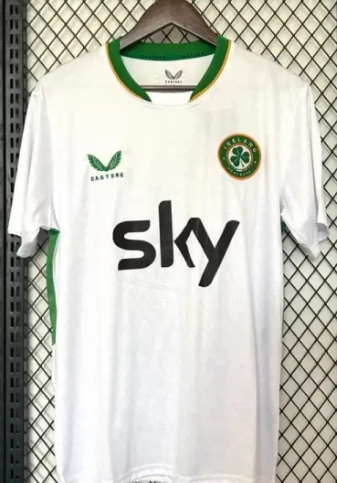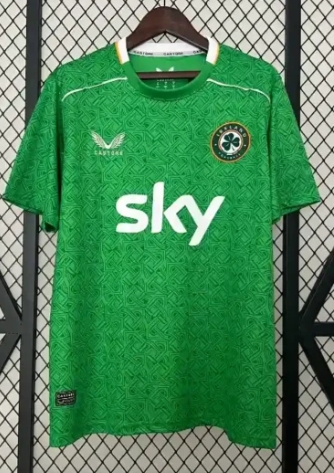ireland soccer jerseys football YUPOO china B2B2C Wholesale Supplier Branded national ireland soccer jerseys retro shirts, join us on whatsapp | Yupoo fashion national ireland soccer jerseys players jerseys football retro jerseys reseller online store , Yupoo jerseys Replica top version for yupoo wholesale drop shipping jerseys to worldwide.

The history of soccer in Northern yupoo jerseys of Ireland, governed by the Irish Football Association (IFA), is both rich and complex, marked by notable achievements, passionate support, and the challenges posed by political and social issues. Northern Ireland has produced a vibrant soccer culture, a competitive domestic league, and a national team that has made significant contributions to the sport. This overview will delve into the historical development of soccer in Northern Ireland, significant achievements, key players, and the socio-political context that has shaped the game.
Soccer in Northern Ireland can trace its roots back to the late 19th century, with the formation of the Irish Football Association in 1880, making it one of the oldest football associations in the world. The IFA set out to oversee football in Ireland, which at the time included what is now the Republic of Ireland and Northern Ireland.
The first official match took place in 1881, and the national team played its first international match against Wales on February 18, 1882, ending in a 1-1 draw. As the sport gained popularity, local clubs competed in various leagues, with the Irish League, established in 1890, becoming the primary competitive league in Northern Ireland.
The Irish League quickly developed into a robust and competitive league, featuring clubs such as Linfield, Glentoran, Cliftonville, and Crusaders. These clubs not only competed for domestic honors but also participated in various regional competitions and cup matches.
Throughout its history, the Irish League has been home to many local talents while also attracting players from Great Britain and beyond. The league's popularity has been influenced by the passionate fan base that supports its clubs, creating an electric atmosphere during matches. The league has undergone several transformations, including changes in the league structure and formats to enhance competitiveness and attract interest.
Northern Ireland's national team, often referred to simply as "Northern Ireland," rose to prominence in the early to mid-20th century. The team’s first major tournament came in the 1958 FIFA World Cup held in Sweden. Managed by Peter Doherty, the squad showcased remarkable talent and determination, ultimately reaching the quarter-finals. This achievement remains one of Northern Ireland’s proudest moments in its footballing history.
The team’s success continued into the 1960s, achieving qualification for the 1966 FIFA World Cup in England. Although the national team did not advance beyond the group stage, their participation brought significant attention to Northern Irish football.
Northern Ireland's participation in the 1958 World Cup is perhaps the pinnacle of its football history. The team, led by stars such as Danny Blanchflower, Malachy McCourt, and Jim Bowers, advanced to the knockout stages by finishing second in their group. In the quarter-finals, they faced the Czechoslovakian team but were eliminated after a narrow 4-3 defeat. The team received widespread recognition for their spirited performances, and the tournament remains a source of pride for Northern Irish football.
The historical context of Northern Ireland, particularly the sectarian divide and political turmoil during the late 20th century, significantly impacted the development of football in the region. During the Troubles—a violent conflict that unfolded from the late 1960s through the 1998 Good Friday Agreement—football was sometimes overshadowed by societal unrest. The sport became a means of uniting communities, with clubs often representing specific communities or ideologies.
The impact of these societal issues affected the national team’s performance and public support, leading to periods where players faced challenges in representing their country. Nevertheless, many players emerged from this tumultuous period to make significant contributions to the national team.
The late 20th century saw Northern Ireland grappling with its identity and competitiveness on the international stage. While the national team faced challenges, they continued to produce commendable performances in European and World Cup qualifiers.
The 1980s and 1990s were marked by qualification attempts that often fell short. However, players like Pat Jennings, Martin O'Neill, and David Healy became icons in Northern Irish football, helping to raise the profile of the national team and encouraging a new generation of talent.
In the early 2000s, Northern Ireland experienced a resurgence, thanks in part to the arrival of new managerial staff and a fresh approach to player development. The IFA invested in youth programs and facilities, fostering young talent and creating a pathway for promising players to enter the national setup.
In recent years, Northern Ireland has qualified for major tournaments, notably reaching the group stage of the European Championship in 2016 held in France. This achievement, under the management of Michael O'Neill, was met with widespread jubilation and showcased the progress
